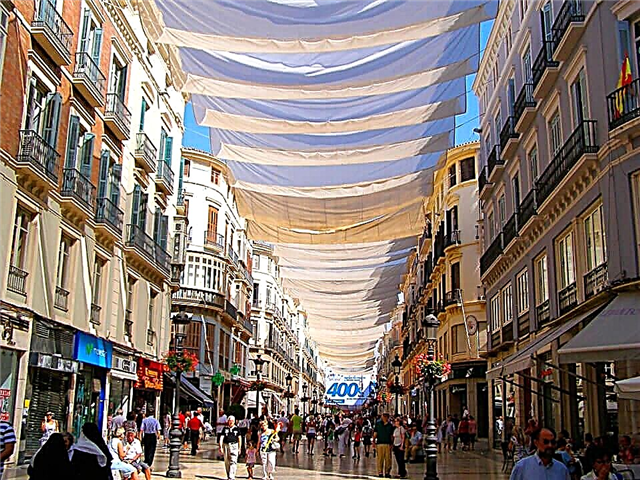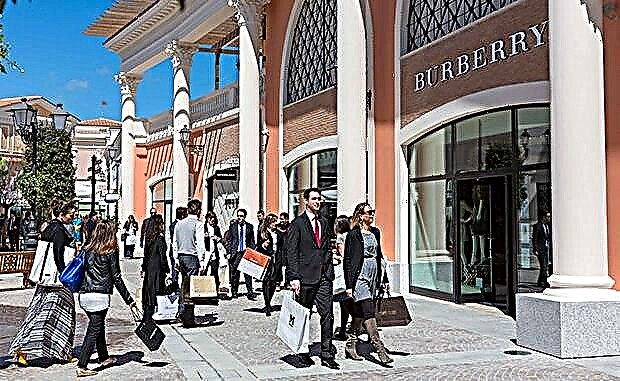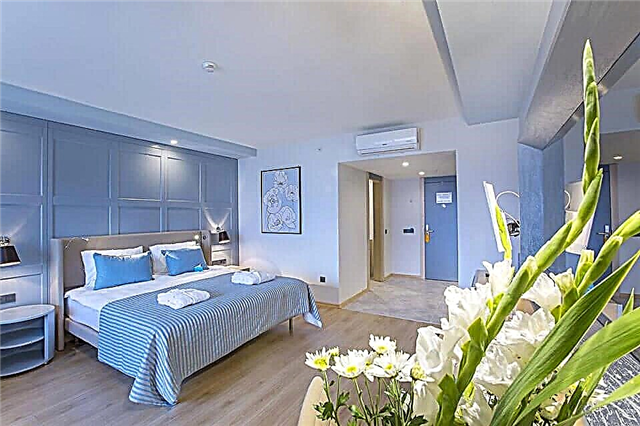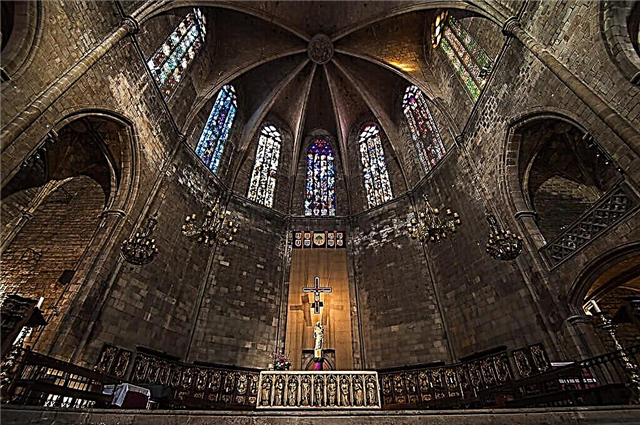The Church of Santa Maria del Mar (Santa Maria del Mar - Church of St. Mary on the sea) in Barcelona is located on a quiet street in the historic quarter of La Ribera (seaside) next to the old port.
Construction history

The church was erected between 1329 and 1383 in just 55 years - a record time for such a structure. For comparison, Barcelona Cathedral took 122 years to build. If not for the misfortune that happened during the construction, the temple would have been completed even earlier: in 1379, a fire that broke out destroyed a significant part of it. It took 4 years to restore, and on November 3, 1383, it was finally built, and in August of the following year, they consecrated and began to hold masses.
The place for the construction was not chosen by chance. Until the 10th century, there was the Church of Santa Maria del Arenys, where the remains of the martyr Eulalia, who is the beloved saint and patroness of Barcelona, were secretly kept. After the discovery of the relics, it was decided to begin the construction of the temple of Santa Maria del Mar on this sacred site.
The cornerstone of the modern temple was laid on March 25, 1329. King of Aragon Alfonso IV was present at the foundation. The certificate of this is embossed in Latin and Catalan letters, as can be seen by reading the two inscriptions on the sides of the front door. On the part of the monarch, it was a tribute to the higher powers for the prosperity of the country and the leading position that Spain occupied in the XIV century at sea.

The La Ribera area has long been known as a place of residence of common people: artisans, sailors, fishermen, shipbuilders, dock workers, merchants. With their money and their efforts, the church was built. The life of these people depended on the changeable sea elements, so everyone wanted to take part, to contribute to the construction of a temple in honor of the Marine Mother of God - the patroness and protector of sailors.
The poor of the seaside decided to build "their own, sea church", which would overshadow the magnificent Cathedral under construction at that time, intended for the royal family, ecclesiastical and secular nobility. It was a real folk building, where everyone took part: merchants and artisans donated money, dock workers and fishermen carried stones from the quarries of Montjuïc Mountain. Their hard work is immortalized at the main entrance gate: bent figures of people carry heavy boulders on their backs. The coat of arms of the harbor workers' guild can also be seen here.
Architecture

The author of the project was the talented architect Berenger de Montagut. He designed the cathedral, which is one of the few examples of pure Catalan Gothic style. In contrast to the European Gothic style, the Catalan style is more minimalistic: it does not amaze with pomp, spiers and towers directed upwards, stone lace and bas-reliefs.
The facade of the Church of Santa Maria del Mar, made of gray stone, is dominated by horizontal smooth planes, with a minimum of decorations. There is no vertical orientation in the building structure. Outwardly, he is strict, squat, somewhat massive and seems small. In fact, its dimensions are 80 * 33 m, the height of the central nave is 33 m. Two octahedral bell towers installed along the edges of the building, 40 m high, end with flat horizontal tops.
The stained-glass windows of the building are very beautiful. Above the semicircular arched entrance is the cathedral's only striking decoration - a magnificent large rosette-shaped stained glass window dating from 1459. On the facade there are many pointed arches and stained glass windows.
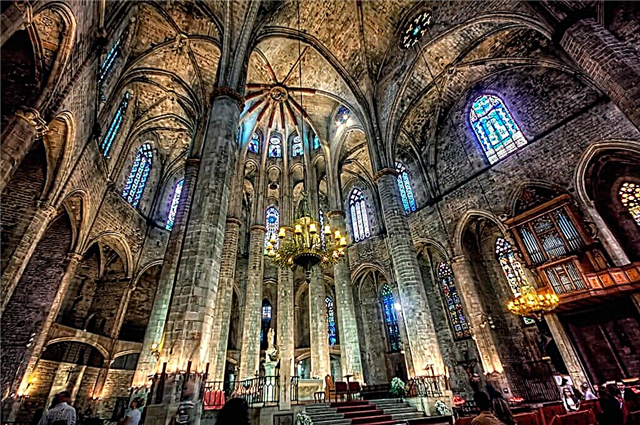
On the vault of the central arch there are carved figures and patterns. In the recess above the entrance gate - Christ the Savior, sitting on a throne, the Virgin Mary and John the Baptist bowed in low bow before him. On both sides in the niches are sculptures of the apostles Peter and Paul. But the main secret of the cathedral, in which the architect's genius manifested itself, is inside the building. All those entering the church stop, amazed by the contrast: the gloomy outer walls hide a huge bright interior space, permeated with soft radiant light.
The lightness and airiness of the structure is given by 18 thin tall octagonal columns supporting a flat 33-meter vault. Their sparse rows are 13 meters apart and visually divide the cathedral into three symmetrical naves. The height of the central and side aisles is approximately the same. This is what gives volume and integrity to the space, it seems to be one.
Interior decoration
The interior of the church is very laconic. This is due to the fact that a huge amount of valuable property of the temple was irretrievably lost: over the years, various shocks destroyed the basilica. But one of the biggest misfortunes happened during the civil war in July 1936. The temple was set on fire, and it burned for several days in a row.

The magnificent Baroque altar, liturgical objects, sculptures and many images were burned down. Only the walls, pillars and stained-glass windows on the upper level survived, because the fire did not rise so high. After the restoration and elimination of the consequences of the fire, the harmony and proportionality of the forms of the structure, free from numerous objects, became even more obvious and striking.
There is an amazing atmosphere inside the temple. The main decoration is the light penetrating through many stained-glass windows of the 15th - 18th centuries. Two stained glass windows depicting the Last Judgment were made by master Sendrius Desmasnes in 1474. On the rest you can see episodes on religious themes: Pentecost, Ascension and Coronation of the Mother of God, Birth of Jesus, Annunciation and betrothal of the Virgin Mary, Eucharistic allegory, etc. No less impressive are the bright stained glass windows depicting fountains of living water, cypresses, palms.

Successful color solutions, together with the elegance of designs, create a feeling of incredible spaciousness, not burdened by numerous sculptures, bas-reliefs, and stucco moldings. At the altar there is a sculpture depicting the Coronation of Our Lady. At the feet of the statue is a sailing ship. This scene personifies the patronage of the Mother of God to seafarers.
The temple houses the tombs of noble people, their names are engraved on the floor slabs along the walls.
The acoustics of the church is unique, organ music sounds here every day, and masses are celebrated. The central nave is filled with numerous benches for the faithful. Concerts of classical music are often held within the walls of the temple. Many famous people come here to listen to Mass, to perform wedding rituals, baptism.
Rooftop observation deck
Those wishing to look at the panorama of Barcelona from a height of 35-40 meters can climb the steep stairs to the roof and towers of the cathedral, where there are observation platforms. Viewing time - 40 minutes daily from 13 to 17 hours. From a height, beautiful views of the city and its sights open up, which can be captured in a photo and they will remain in your memory for a long time.
Working hours
From Monday to Saturday, the church is open from 9.00 to 20.30 hours. From 13.30 to 16.30, excursions in English are conducted hourly and entrance is paid, the ticket price is 7 euros, and from 9.00 to 13.00, or from 17.00 to 20.30, you can independently inspect the temple for free, listen to the organ. On Sundays and public holidays, it is open to the public: from 10.00 to 13.30 and from 16.30 to 20.00.
Where is the church and how to get there
The Church of Santa Maria del Mar is located in the Passeig del Born area in Plaza de Santa Maria, 1 (Piazza Santa Maria, 1) near the metro stations: Jaume I (L3) and Barceloneta (L4). can be reached by buses: V15, B17, 40, 45 to the Via Layetana stop.





